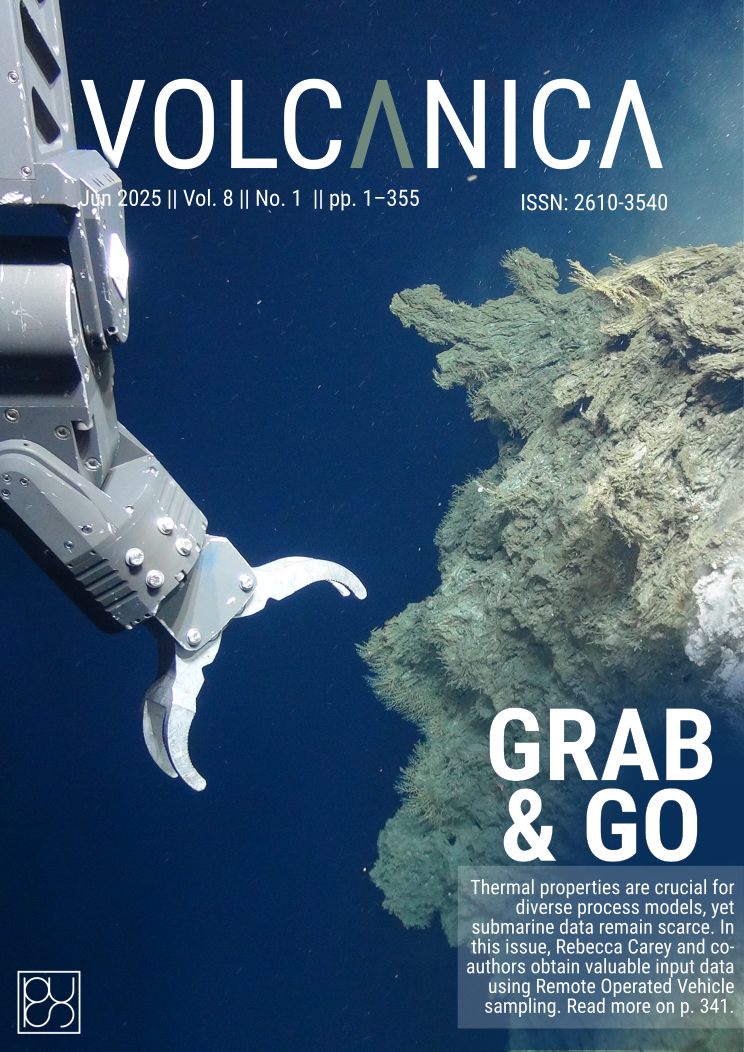The use of UAV-based visible and multispectral thermal infrared data for active volcano monitoring and analysis: test of a low-cost solution applied to the 2022 Meradalir eruption
Main Article Content
Abstract
Timely analysis of active lava flow dynamics and emplacement are typically limited by current ground, UAV, and satellite-based observational capabilities. The Python Miniature Thermal Instrument for Uncrewed Aircraft Systems (PyMTI-UAS) is a relatively inexpensive, low-mass, low-power multispectral thermal infrared instrument capable of measuring rapid changes in thermal and gas dynamics of lava flows to at high resolution. The 2022 Meradalir effusive eruption in Iceland offered an opportunity to acquire visible and multispectral thermal infrared data with PyMTI-UAS of recently emplaced lavas. A successful deployment occurred during the end of the 2022 eruption and the resulting thermal infrared data provide insights into lava surface texture relationships, post-emplacement alteration, and gas and thermal flux during cooling. This study demonstrates that PyMTI-UAS offers the framework to provide accurate multispectral thermal infrared data at low cost from small UAVs to provide data vital for monitoring volcanic activity and aiding hazard response.
Downloads
Article Details

This work is licensed under a Creative Commons Attribution 4.0 International License.
© The Author(s).
Submission of an original manuscript to Volcanica will be taken to mean that it represents original work not previously published, and not being considered for publication elsewhere.
The Creative Commons Attribution 4.0 International License permits unrestricted use, distribution, and reproduction in any medium, provided you give appropriate credit to the original author(s) and the source, provide a link to the Creative Commons license, and indicate if changes were made.
Accepted 2025-04-24
Published 2025-06-11





